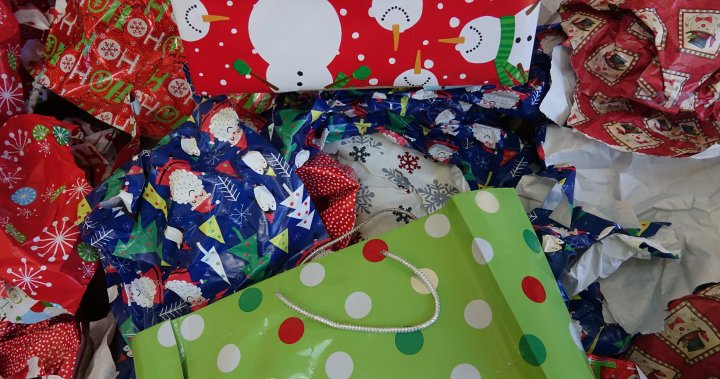The holiday season, a time of joy and celebration, often leaves behind a significant environmental footprint in the form of discarded wrapping paper, packaging, and other festive materials. Canadians alone contribute an estimated 540,000 tonnes of wrapping paper to landfills annually, a figure that underscores the need for more sustainable holiday practices. Managing this waste effectively requires a nuanced understanding of recycling guidelines and a commitment to reducing and reusing materials whenever possible.
A key first step in responsible waste management is understanding which holiday materials are recyclable and which are not. Common recyclable items include plain cardboard boxes, many types of paper-based wrapping paper, and certain plastics. The general rule for wrapping paper is that if it tears easily, feels like paper, and doesn’t contain glitter, foil, or plastic coatings, it’s likely recyclable. Cardboard boxes, holiday cards, envelopes, and rinsed plastic plates and cups can also be recycled. However, metallic wrapping paper, paper with glitter or plastic coatings, and gift bags are typically not recyclable due to the presence of materials that interfere with the recycling process. Similarly, ribbons, bows, and plastic items like bubble wrap and gift cards are not typically accepted in recycling programs.
Tissue paper presents a slightly different scenario. While generally not accepted in traditional recycling bins, it can often be composted, as it’s typically made from biodegradable materials. However, it’s important to check with your local municipality to confirm their specific composting guidelines. Plastic packaging from toys and electronics can sometimes be recycled, but this too varies by municipality. “Moulded plastic packaging,” often used for these items, may be accepted in some areas but not others. Consulting local resources or using online tools like the Waste Wizard website can help clarify which materials are accepted in your specific region.
Beyond recycling, reducing and reusing holiday materials are crucial strategies for minimizing environmental impact. One of the easiest ways to reduce waste is to simply use less wrapping paper. Consider alternative wrapping methods like reusable cloth bags, scarves, or even newspaper. Gift bags, though not recyclable, can be reused multiple times, reducing the need to purchase new ones each year. Ribbons and bows can also be saved and reused for future gifts. By thoughtfully choosing and reusing materials, we can significantly decrease the amount of holiday waste that ends up in landfills.
Furthermore, adopting a more mindful approach to gift-giving can also contribute to waste reduction. Consider experiences or charitable donations as alternatives to physical gifts, which inherently require packaging and wrapping. When purchasing gifts, look for items with minimal packaging or packaging made from recycled materials. By shifting our focus from material goods to experiences or thoughtful alternatives, we can reduce the overall demand for packaged products, contributing to a more sustainable holiday season.
In conclusion, managing holiday waste effectively involves a multifaceted approach that goes beyond simply separating recyclables. It requires a conscious effort to reduce consumption, reuse materials whenever possible, and recycle appropriately based on local guidelines. By embracing these practices, we can minimize our environmental footprint and ensure that the joy of the holiday season doesn’t come at the expense of the planet. Utilizing online resources like the Waste Wizard website and staying informed about local recycling regulations are key steps in making sustainable choices and contributing to a greener future. Through collective action and mindful consumption, we can transform the post-holiday landscape from one of overflowing landfills to one of responsible resource management and environmental stewardship.

